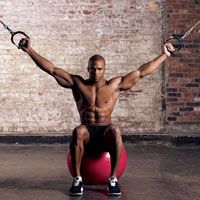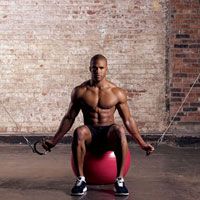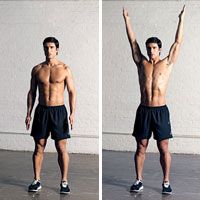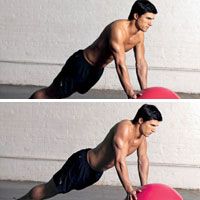Medical expert of the article
New publications
The back muscles and their "support group"
Last reviewed: 04.07.2025

All iLive content is medically reviewed or fact checked to ensure as much factual accuracy as possible.
We have strict sourcing guidelines and only link to reputable media sites, academic research institutions and, whenever possible, medically peer reviewed studies. Note that the numbers in parentheses ([1], [2], etc.) are clickable links to these studies.
If you feel that any of our content is inaccurate, out-of-date, or otherwise questionable, please select it and press Ctrl + Enter.

Starting a new exercise program can produce significant short-term gains in strength and size. But learning more about your muscles, joints, and ligaments outside of physical activity can reap even greater benefits. You'll learn the basics of strengthening your latissimus dorsi—and the surrounding muscles and joints that serve to stabilize your back.
Support group
- Teres major muscle
This thick, flat muscle extends from the outer edges of the shoulder blades to the bones of the forearms. They help the rotator cuffs stabilize the shoulder joints.
- Trapezius muscle
This long, triangular muscle performs several functions, including scapular elevation (shrugging the shoulders), scapular depression, and scapular adduction (pulling the shoulders together).
- Rhomboid muscles
The rhomboid minor and major muscles lie beneath the trapezius muscles, helping to stabilize and rotate the scapulae.
- Lower back
The latissimus dorsi works with the gluteus maximus to stabilize the spine and coordinate the two halves of the body during walking, running, and throwing.
Your exercise plan
- Straight Arm Lat Pulldown
This crossover exercise takes your arms through a 180-degree range of motion while creating some serious resistance.
Kneel or sit on the exercise ball next to the crossover, arms out to the sides with thumbs up, a handle in each hand.
Pull the handles down toward the back of your thighs until they almost touch your buttocks. Slowly return to the starting position.


- One-arm, one-legged, lat pulldown
This exercise works the latissimus dorsi, which stabilizes your abs, hips, and lower back.
Take the handle in your right hand. Raise your right leg.
Bring your elbow to the side of your body, then allow your arm to straighten back to the starting position. Do 12 reps, then turn and repeat with your left arm, lifting your left leg.

Weak point: Shoulder blades
Squeeze your shoulder blades together before you begin the lat pulldown movement and you'll automatically recruit more muscle tissue.
Do your warm-up properly
These quick movements can improve your form and protect you from nasty injuries like impingement syndrome and rotator cuff strains and tears. Do both exercises to prepare for your back workout routine.
Raising hands
This dynamic stretch increases flexibility in the latissimus dorsi, teres major, and scapulae.
Straight arms at the sides of the body, gluteal muscles tense.
Without bending your arms, raise them above your head and spread them slightly to the sides. Perform 15-20 repetitions as part of a dynamic warm-up.

Exercise for the shoulder blades
This exercise will strengthen your scapulars, rhomboids, and trapezius muscles.
Place your hands on the fitball.
Keep your arms slightly bent, squeeze your shoulder blades together for 2 seconds, then spread them apart and pause. Do 12-15 reps.


